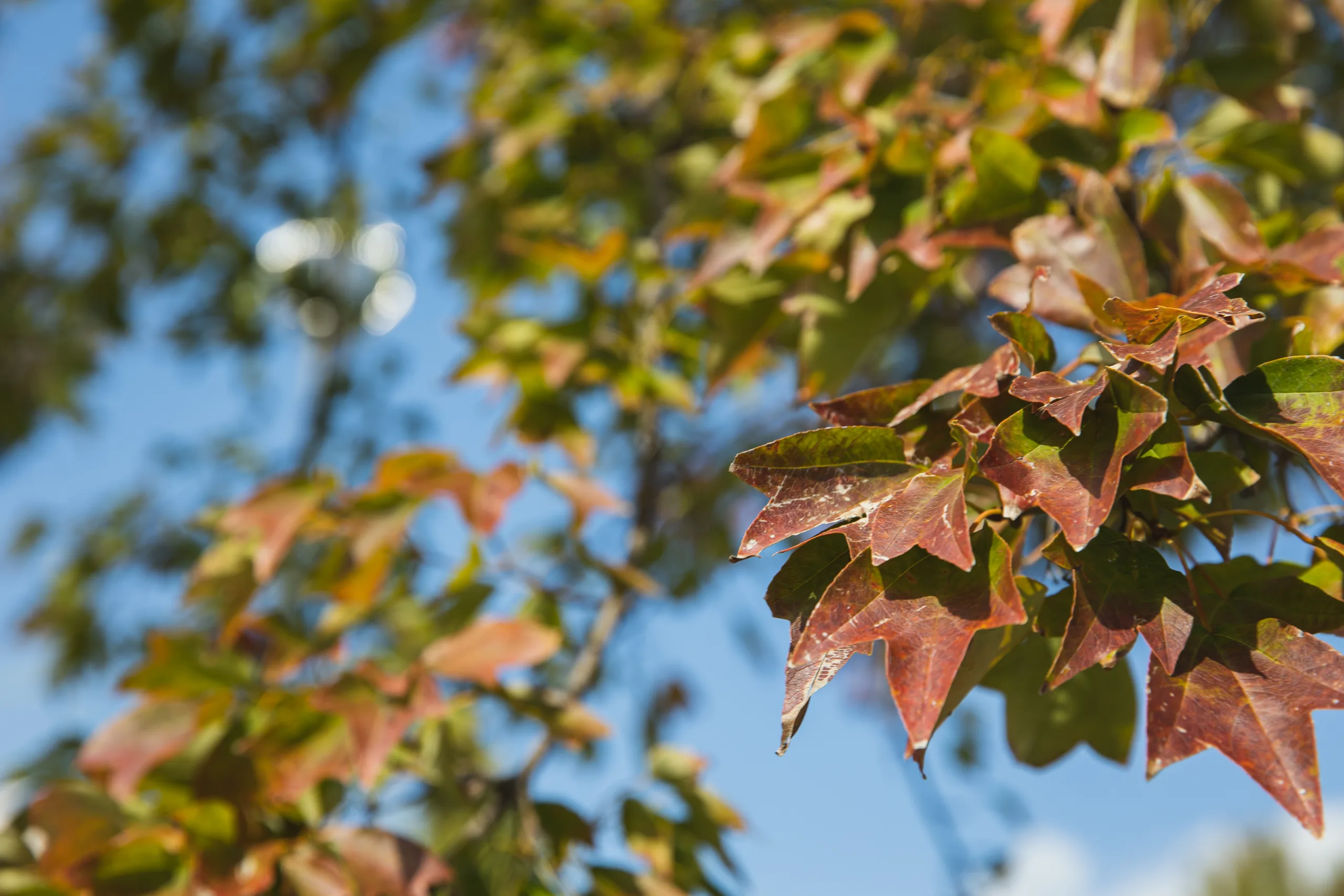Trees are an important part of our environment, providing us with beauty, shade, and oxygen. But how tall are trees allowed to grow in gardens? This is a common question for homeowners who want to maintain their garden and landscaping without overstepping any local regulations. In this article, we will discuss the different factors that can affect the height of a tree in a garden and review what is typically allowed or restricted in terms of tree growth. We will also cover how to determine the height of a tree so you can ensure that your garden remains in compliance with local laws.
The maximum height of trees in gardens can vary greatly depending on the type of tree and the space available. Generally, most trees in a garden will reach heights between 10-30 feet, although some species can grow taller than this.
Soil Conditions
Soil conditions are one of the most important factors that affect tree height in gardens. The type of soil, its pH level, and its nutrient availability all play a role in determining how tall a tree can grow. Poorly drained soils can lead to stunted growth and root rot, while overly-enriched soils can lead to rapid growth and a weakened structure. Additionally, soil with inadequate levels of nitrogen or calcium can cause trees to become stunted or even die back. Proper soil management is essential for trees to reach their full potential height.
Climate
Climate is another important factor that affects tree height in gardens. In cold climates, trees may take longer to reach maturity and their growth rate may be slower than in warmer climates with less extreme temperatures. Trees also respond differently to weather patterns; some may only experience limited growth during times of drought or excessive rainfall, while others may benefit from these weather fluctuations. When selecting a tree for a garden, it is important to consider the climate where it will be planted so that it has the best chance of reaching its full potential height.
Light Exposure
Light exposure is another factor that affects tree height in gardens. Trees need sunlight for photosynthesis; without adequate light exposure, they will not reach their full height potential. Trees grown in shadier locations are likely to be shorter than those grown in sunny spots as the lack of light reduces their rate of photosynthesis and thus their rate of growth. Additionally, trees planted close together can create shade on each other and limit their growth potential.
Pruning Practices
The way a tree is pruned also affects its eventual size and shape. Pruning practices such as selective pruning can help encourage lateral branching and bushier forms which will ultimately result in a shorter tree than if left unpruned or heavily pruned which will produce tall thin trees with fewer branches. Pruning practices should be tailored to the species of the tree being grown; some species respond better to heavy pruning while others should only have minor shaping done.
Genetics
The genetics of a particular species also plays an important role in how tall it will grow ultimately become within a given environment. Different species have different genetic predispositions towards certain characteristics such as size, shape, and hardiness which will determine how tall a particular specimen will become when grown under similar conditions as other specimens from the same species.
The Benefits of Planting Tall Trees in Gardens
Tall trees bring numerous benefits to a garden, from providing shade and creating a tranquil atmosphere to enhancing the look and value of a property. Planting tall trees in your garden can provide you with the perfect backdrop for your outdoor space. Here are some of the benefits of planting tall trees in gardens:
Firstly, tall trees provide both physical and psychological benefits. Physically, they can provide much needed shade for both people and plants, protecting them from the sun’s harsh rays and other elements. On a psychological level, tall trees create a sense of peace and calm as they block out noise from traffic or neighbours. The sight of lush green leaves also provides a tranquil environment that can help to reduce stress levels.
Secondly, planting tall trees in your garden can enhance its look and value. Trees add structure and interest to any property, as well as providing colour throughout the year. They also increase privacy by blocking out the view from neighbouring properties or busy roads.
Finally, planting tall trees can be beneficial for wildlife. Trees are home to many species of birds and insects that can help to bring life into an otherwise lifeless garden. They also act as food sources for birds during winter months or when food is scarce due to drought or other environmental conditions.
In conclusion, planting tall trees in your garden has many benefits; from providing physical and psychological benefits to enhancing its look and value. They are also beneficial for wildlife by providing shelter for birds and insects as well as food sources during times of scarcity. Therefore, if you are thinking about planting some taller varieties in your garden consider these advantages before making your decision!
Types of Trees Suitable for Planting in Gardens
When it comes to choosing trees for your garden, there are many types to choose from. Depending on the size of your garden and the type of look you are trying to achieve, you can choose from deciduous trees, evergreen trees, flowering trees, and fruit trees. Here is a look at some of the most popular types of trees suitable for planting in gardens.
Deciduous trees are popular options as they provide a beautiful display of foliage during the spring and summer months. They also provide shade during the hot summer months. Maple, oak, birch, elm and ash are all examples of deciduous trees that can be planted in gardens.
Evergreen trees serve as year-round sources of greenery and beauty in your garden. Pine and fir trees are two popular examples of evergreens that look great both planted alone or grouped together for a forest feel.
Flowering trees are a great way to bring colour into your garden without having to rely on plants or flowers. Magnolia, cherry blossom and crab apple are all examples of flowering trees that can bring a splash of colour into your garden all year round.
Finally, if you want to enjoy edible treats right from your own back yard then fruit trees may be just what you need. Apple and pear are classic favourites but there are also more exotic fruits such as figs, kiwi and citrus available to choose from too.
Tips to Control the Growth of Trees in Gardens
Tree growth can be a real issue for gardeners, especially when they start encroaching on pathways or your beautiful flower beds. Fortunately, there are several ways to control the growth of trees in your garden. Here are a few tips:
1. Pruning is one of the most effective ways to control the size and shape of trees. Pruning should be done regularly, as it helps to keep trees healthy and eliminates dead branches that can otherwise pose a hazard.
2. Mulching around the base of trees helps maintain an even temperature for the tree’s roots and reduces competition from weeds for moisture and nutrients. Be sure to use an organic mulch such as bark chips or wood chips instead of rubber mulch which can impede water absorption and create an unhealthy environment for the tree’s roots.
3. Regularly fertilizing your trees helps ensure that they have the energy they need to grow properly and stay healthy. Be sure to choose a fertilizer that is specifically designed for trees, as this will provide them with exactly what they need without overloading them with unnecessary nutrients which can cause damage in large doses.
4. Planting trees in containers helps limit their growth, as containers impose physical boundaries on how far roots can spread out into your garden bed or lawn area. Containers also make it easier to move and rearrange plants if needed, so you can easily adjust their placement without having to replant them every time you want something shifted around in your garden design.

Reasons to Prune Trees in Gardens
Pruning trees in gardens is important for many reasons and can be beneficial to both the health of the tree and the aesthetics of your garden. Pruning helps to remove dead, diseased or damaged branches, encourages new growth, maintains the shape and size of a tree, increases air circulation, and improves sunlight penetration. Pruning can also help enhance the flowering and fruiting of certain trees. Regular maintenance pruning also helps protect trees from potential storm damage.
Removing dead branches not only improves the look of your garden but can also help protect other living parts of the tree from disease or pests. Dead branches can act as a bridge for diseases to spread from one part of a tree to another, so pruning them off helps prevent this spread. Furthermore, removing diseased branches prevents further damage to other parts of the tree. Pruning out dead or damaged branches also encourages new growth by allowing more light and air circulation into the centre of a tree’s canopy.
Maintaining a desired shape or size is another important reason for pruning trees in gardens. When left unchecked, some species can grow too large for their given space and become very heavy with dense foliage – making them more prone to breaking during strong winds or storms. It’s important to select a species that fits with your needs before you start planting, but if you already have an established tree that’s too large for its current space then pruning is necessary.
In addition to removing dead wood and controlling size and shape, pruning helps increase air circulation around a tree’s canopy which will improve its overall health by reducing humidity levels which can cause fungal diseases such as powdery mildew and leaf spot. Increasing air circulation will also help reduce pests such as aphids which thrive in humid environments.
Pruning trees in gardens can also help promote flowering or fruiting potential for certain species by removing spent blooms or overbearing fruits that are reducing energy production within a plant. This not only increases yields but can make fruits taste better too!
Finally, regular maintenance pruning will help protect trees from potential storm damage by removing weak limbs that could get caught up in strong winds – potentially leading to breakage or uprooting of larger limbs which could cause major damage to property or injury if they fall onto someone.
In conclusion, regular pruning is essential for maintaining healthy trees in gardens as well as enhancing their aesthetic appeal. Although it may seem daunting at first it’s actually quite simple once you understand how each species should be pruned correctly – so don’t be afraid to give it a go!
Limitations on Tree Height in Garden Spaces
The height of trees in any given garden space is an important consideration for gardeners to take into account. Tree height can have a significant impact on the overall look and feel of the garden, as well as the amount of sunlight and shade available. For this reason, many gardeners opt to limit the height of trees they plant in their gardens to ensure that their design remains within certain parameters.
When deciding how tall a tree should be in your garden, there are several factors to consider. The size of your garden is an important factor; larger gardens can usually accommodate taller trees than smaller spaces. Additionally, it’s important to think about how much sunlight or shade you want for your plants, as taller trees will provide more shade and less direct sunlight.
Another important consideration when planting trees is the type of tree you plan to use. Different species of trees have different natural heights, so it’s important to research each species before planting in order to ensure that it won’t grow too tall for your space. Additionally, pruning or trimming can help keep a tree at a specific height or shape if needed.
Finally, there are zoning regulations and other local laws that may limit the height of trees that can be planted in certain areas. Local governments often restrict tree heights in order to reduce potential hazards such as falling branches and blocked views; if these restrictions apply in your area, they should be taken into account when planning your garden design.
In short, there are many factors that should be taken into account when deciding how tall a tree should be planted in a given garden space. Taking all these considerations into account can help ensure that the finished product is both beautiful and safe.
Location
When choosing tall trees for your garden, it is important to consider the location in which you plan to plant them. Pay attention to the amount of sunlight the tree will receive, as well as the soil and drainage conditions of your space. Additionally, think about how much room the tree will take up and whether or not it will grow too large for your garden.
Climate
The climate in which your tall tree will be planted should also be taken into consideration when making a selection. Make sure that the species of tree that you choose is suitable for your local climate and won’t be damaged by extreme temperatures or weather conditions.
Maintenance
When selecting tall trees for your garden space, consider how much maintenance they will require. Some species may need more frequent pruning or protection from pests than others. Think about whether or not you have the time and resources to properly care for and maintain the tree over the years.
Budget
Finally, be sure to factor in any budget constraints when selecting a tall tree for your garden space. Consider both the initial cost of purchasing and planting a tree, as well as any ongoing costs associated with its maintenance and care.

Conclusion
Trees are an important part of any garden, providing shade, beauty, and even a place of refuge for wildlife. While there is no definitive answer to how tall trees are allowed to grow in gardens, it is important for homeowners to consider their local regulations and the type of tree they want to plant in order to ensure that it does not become a nuisance or danger. Planting smaller trees can help homeowners avoid potential problems and maximize the benefits of having trees in their gardens. By being aware of the potential risks and benefits associated with planting trees in a garden, homeowners can make informed decisions about how tall they should allow their trees to grow.
In conclusion, while there is no definitive answer as to how tall trees are allowed to grow in gardens, it is important for homeowners to be aware of the potential risks and benefits associated with planting trees in their gardens. By considering local regulations and the type of tree they want to plant, homeowners can make informed decisions about how tall they should allow their trees to grow.
Mark Hoffman is a dedicated arborist and tree care specialist with over a decade of experience. His love for trees began when he visited Yosemite National Park as a teenager and was awestruck by the giant sequoias. Mark pursued his passion by studying forestry at Michigan Technological University, where he earned a Bachelor of Science degree.
Since then, he has worked tirelessly in the field of arboriculture, helping to preserve and protect trees in his community. His expertise and dedication have made him a respected leader in the industry and a valuable resource for anyone seeking advice on tree care.
